Pushing colder, nutrient-rich bottom water toward surface layers promotes circulation in the water column
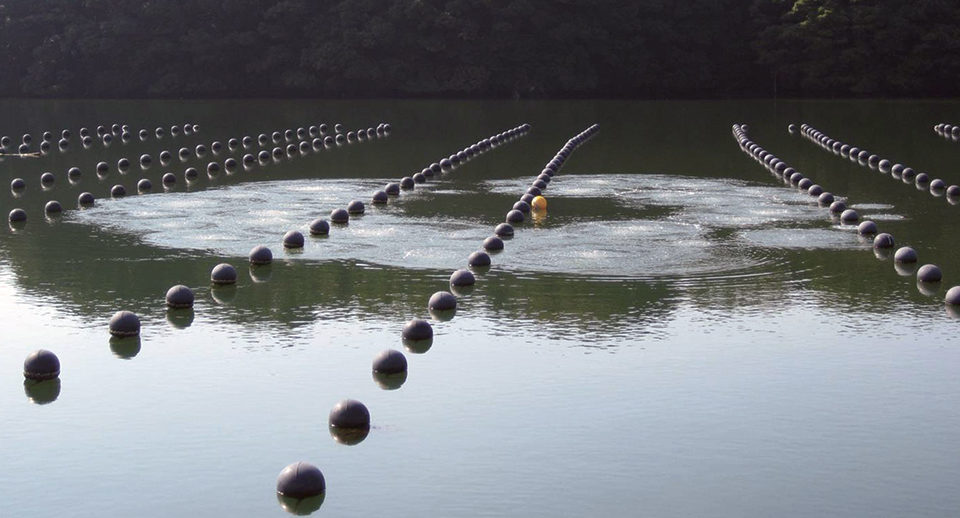
Summer mortality of oysters is a global problem that affects production at commercial farms. Mortalities result from the physiological stress and depletion of energy reserves induced by exposure to stressful environmental conditions. Common seasonal stressors in enclosed bays, where most aquafarms are located, include high water temperatures, eutrophic conditions, fouling organisms and hypoxia, mainly in bottom layers due to thermal stratification of the water column.
Oysters that survive the summer period are often stressed and weak, which usually influences their size, taste of meat and overall quality. Therefore, there is a strong desire for effective mitigative technologies and managements that can overcome summer-related problems during the grow-out phase to guarantee high-quality oysters.
Artificial upwelling
Artificial aeration upwelling, which consists of pushing colder, nutrient-rich bottom water toward surface layers promotes circulation in the water column and is considered an advantageous method to increase the availability of phytoplankton for filter-feeding bivalves. Nevertheless, only limited research has assessed the possible contributions of the technique to the improvement of temperature, oxygen and bivalve conditions.
To help fill this knowledge gap, the authors designed two aeration systems in cooperation with Ohishi Construction Co. Ltd. and installed them in a summer-stratified, hypoxic bay. The main goal of the study was to check for the possible environmental improvements and related effects on farmed oysters.
Experimental setup
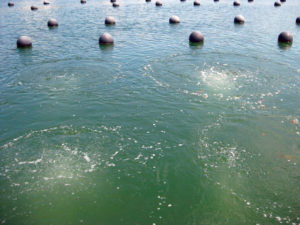
Collaborative work between research institutes and local farmers of the commercially important Ohmura Bay in Nagasaki, Japan, investigated the effects of aeration on the environment and on farmed Pacific oysters (Crassostrea gigas) in the summers of 2011 and 2012.
The aeration was performed from the bottom at two locations: a relatively deep area at 20-meter depth in the center of the bay, where bottom layer hypoxic water is first formed, and at 5.5-meter depth under an oyster farm whose cages were stocked with juveniles. Air was supplied by tubes connected to compressors at a rate of 1.26 cubic meters per minute for the deeper area and 0.15cubic meters per minute for the farming area.
In both study areas, the sampling stations were located at the aeration center and at increasing distances from it. Water samplings were carried out at 30-day intervals for environmental data, and oysters were sampled at the farming area. Data were compared among stations to check differences induced by the aeration.
Environmental improvements
The effects within 30 meters of the aeration were noted in changes in temperature, oxygen concentration and availability of food.
Decreased water temperature and stratification
Water temperature was significantly decreased by the upwelling of cold bottom waters. Temperature stratification indices measured by temperature recorders were an average 0.42 degrees-C lower at the aeration point than the furthest station.
Restricted increase in oxygen concentration
Although restricted only to the beginning of summer and autumn, the oxygen levels were increased in the bottom layer near the aeration (Fig. 1). Although the aeration decreased the oxygen concentration in upper layers above 4-meter depth, during the period of bottom hypoxia, the dissolved-oxygen levels were still above 3 mg/L, which is considered the hypoxic limit. New aeration rates and designs should be tested to guarantee the positive effect of the aeration throughout summer.
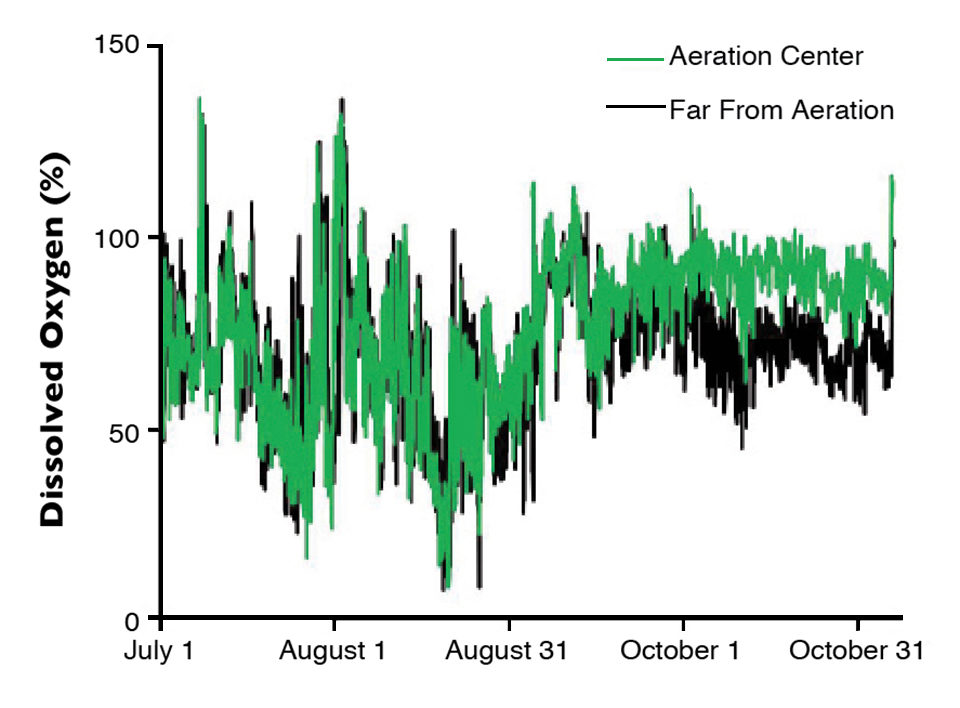
Increased food availability and food quality
The diatom biomass was almost twofold higher at the aeration center than at stations located 60 and 180 meters from it (average values: 162,875 cells/L, 139,433/L and 85,133 cells/L), respectively.
The dominant phytoplankton species changed from dinoflagellates, regarded as poor-quality food for bivalves, to higher-quality food diatoms. Food quality was also assessed by the carbon:nitrogen (C:N) ratios of local suspended particulate organic matter, which indicated progressively higher nutritive rates for the suspended matter as their value decreased. At the aeration point, C:N ratios were lower (Fig. 2).
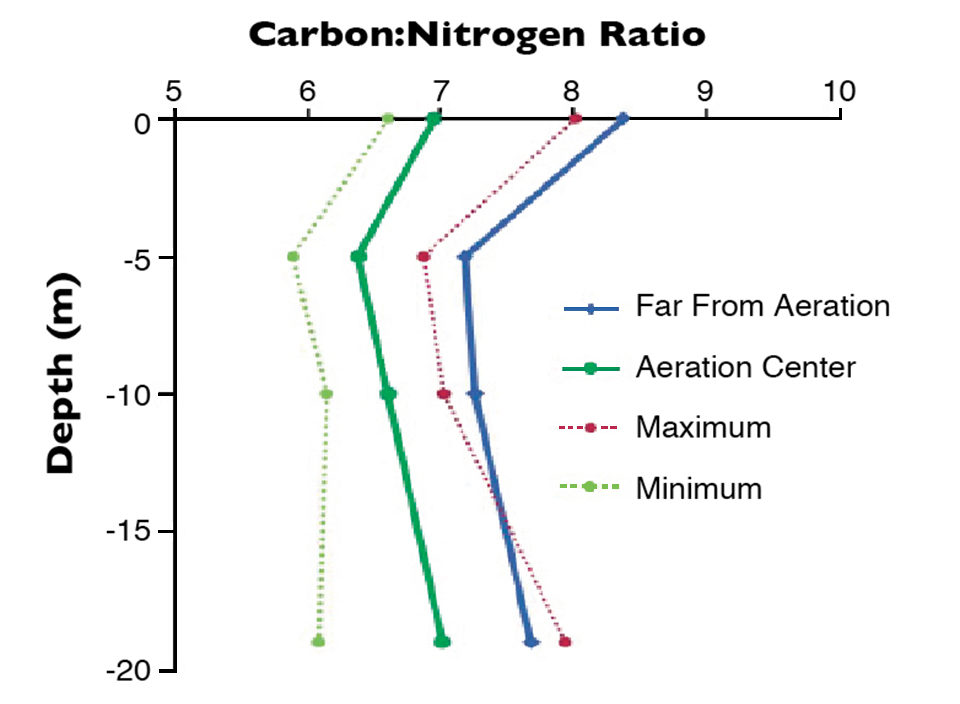
Oyster condition
Oyster overall condition improved, which was proved not only by the shell height growth of almost 9.7 mm/month, but also by higher condition index (C.I.) which is a measure of health and determined by the formula C.I. = (dry meat weight/dry shell weight) x 1,000 (Fig. 3). Total survival was not affected in deep layers, but slightly increased at the surface at the aeration spot (42 percent), when compared to the survival percentages at other locations (30 percent).
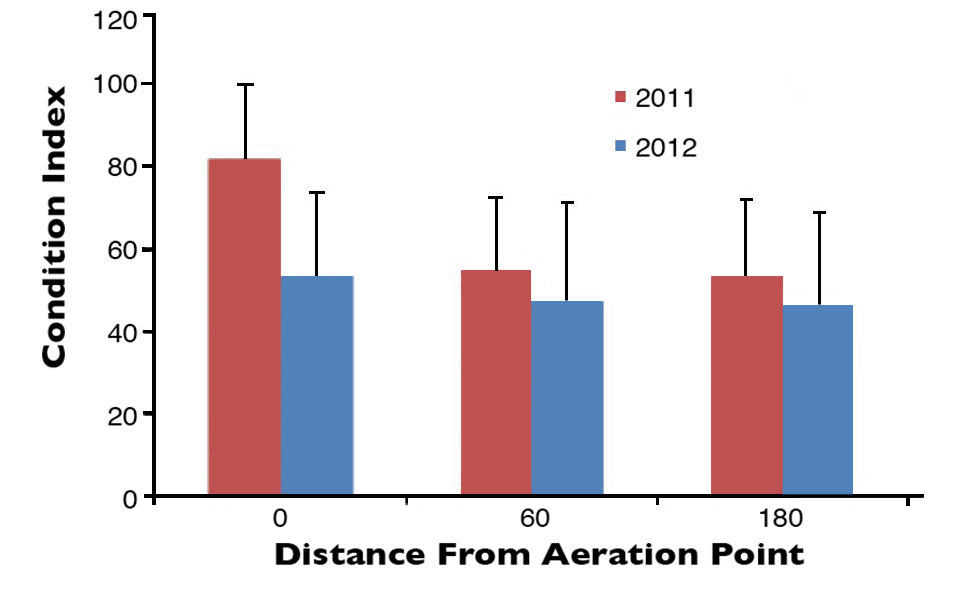
Perspectives
Artificial upwellings were shown to contribute to improvements in farming sites and cultured products during unfavorable periods. However, it is clear the technology should be the subject of future investigations, with assessments of different aeration rates and designs related to each targeted species and possibly under an approach considering global warming.
The costs of aeration were within the usual affordable prices for the fisheries cooperatives in the studied area and resulted in cost-effective positive outcomes. Customized systems, nevertheless, will require strategic planning for each objective in order to provide a basis for decision makers about the benefits of the implementation of such systems for profitable mariculture.
(Editor’s Note: This article was originally published in the March/April 2015 print edition of the Global Aquaculture Advocate.)
Now that you've reached the end of the article ...
… please consider supporting GSA’s mission to advance responsible seafood practices through education, advocacy and third-party assurances. The Advocate aims to document the evolution of responsible seafood practices and share the expansive knowledge of our vast network of contributors.
By becoming a Global Seafood Alliance member, you’re ensuring that all of the pre-competitive work we do through member benefits, resources and events can continue. Individual membership costs just $50 a year.
Not a GSA member? Join us.
Authors
-
Darien D. Mizuta, Ph.D.
Fisheries and Environmental Oceanography Laboratory
Field Science Education and Research Center
Kyoto University
Kyoto, Japan[109,111,99,46,108,105,97,109,116,111,104,64,109,105,110,97,100,46,100]
-
Akihide Kasai, Ph.D.
Fisheries and Environmental Oceanography Laboratory
Field Science Education and Research Center
Kyoto University
Kyoto, Japan -
Hitoshi Yamaguchi, Ph.D.
Nagasaki Prefectural Institute for Environmental Research and Public Health
Nagasaki, Japan -
Hideaki Nakata, Ph.D.
Graduate School of Fisheries Science and Environmental Studies
Nagasaki University
Nagasaki, Japan
Tagged With
Related Posts
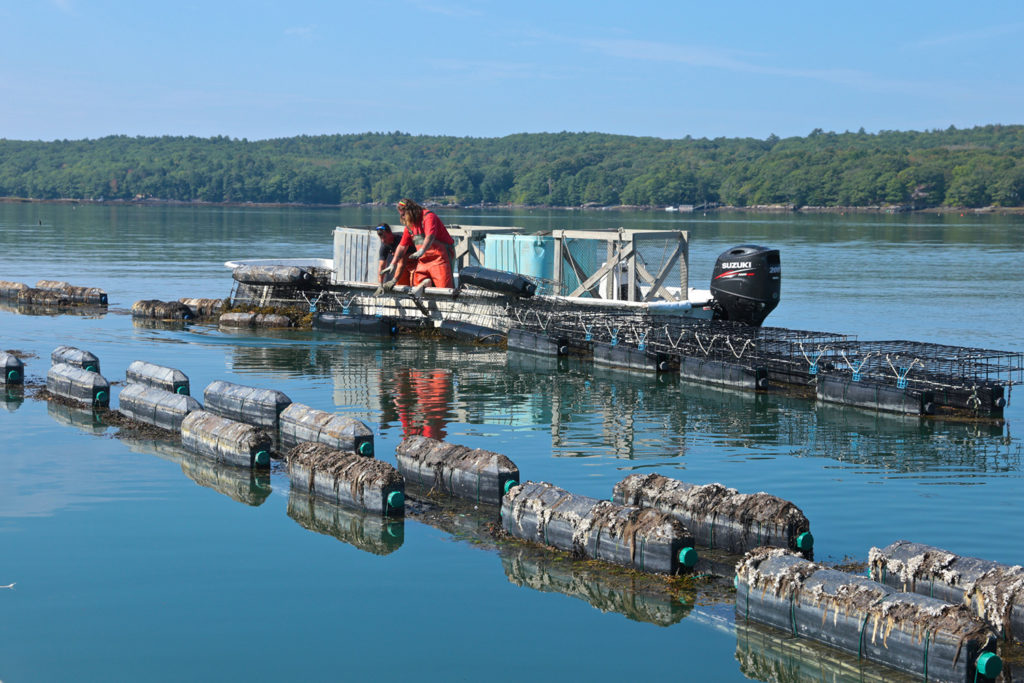
Responsibility
Maine oyster farmer stares down climate change, learns to adapt
Bill Mook’s oyster farm is adapting to more frequent and intense rains, more acidic and warming seawater and other challenges that climate change brings.
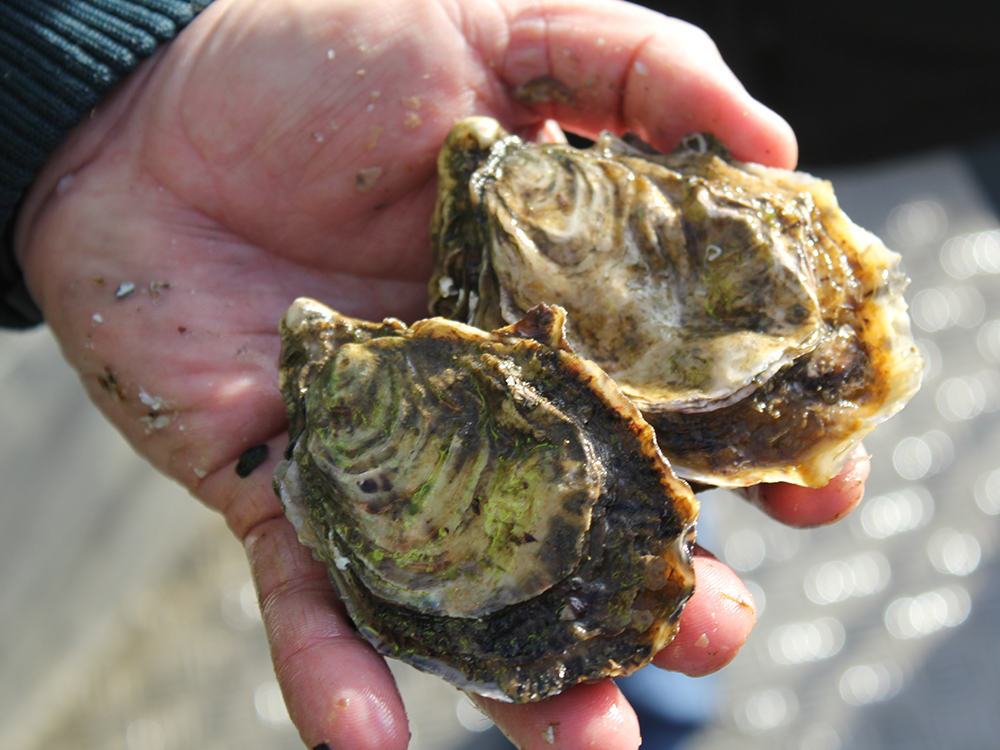
Intelligence
Behold the nutritious oyster
Oysters provide important, natural filtration of water and are an important component of many healthy coastal ecosystems because their active filtering can help improve and maintain water quality. For many coastal communities, oysters are an important food resource and excellent sources of protein and amino acids, zinc, selenium, iron and B-vitamins.
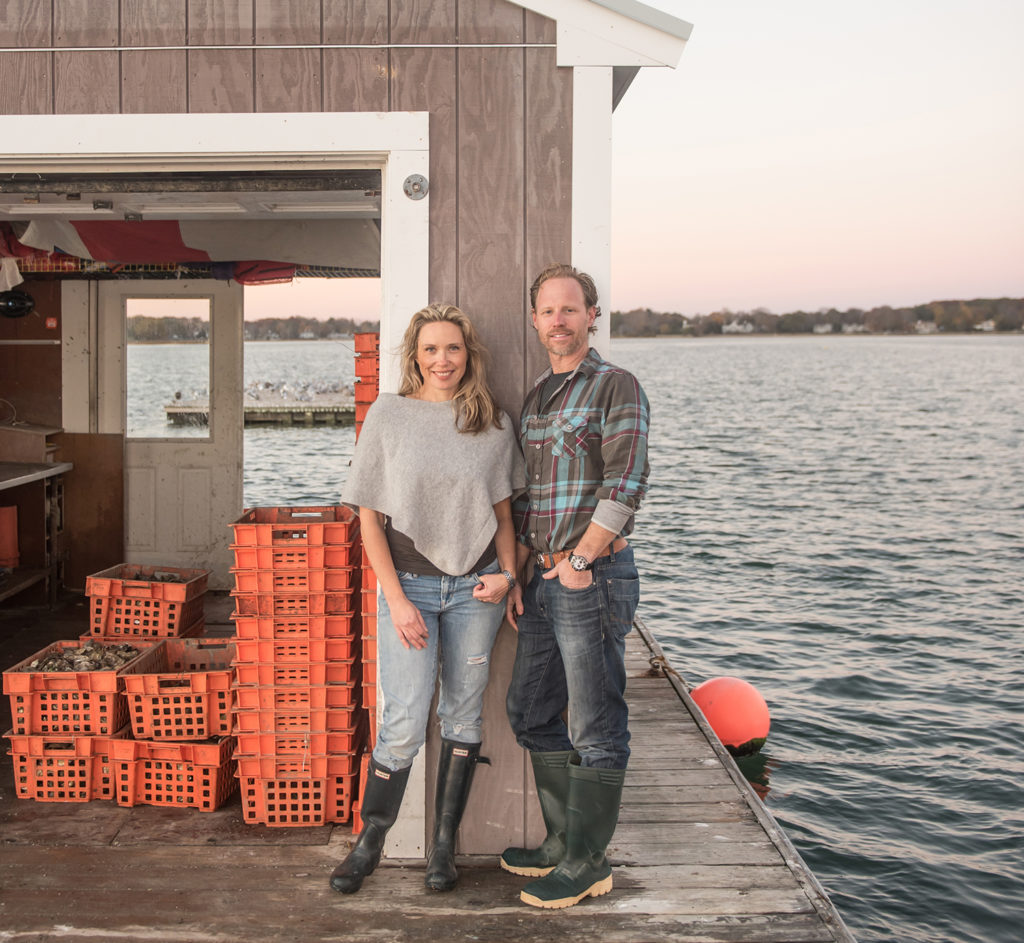
Intelligence
Buy-valves: Massachusetts farmers grow online oyster business
When Real Oyster Cult walked off with a $5,000 prize at Fish 2.0, it was solid affirmation that its online oyster commerce concept is on track for success.
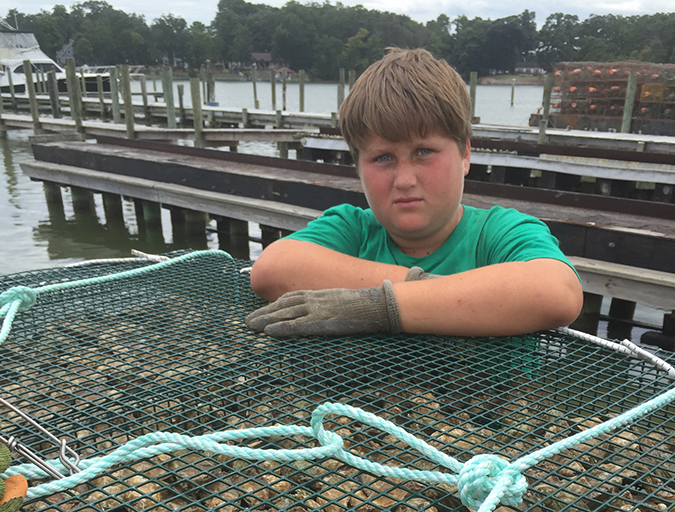
Responsibility
Ailing waterways hail the oyster’s return
The Lower Hudson Estuary and Chesapeake Bay, two waterways once home to thriving oyster beds, would welcome the shellfish’s return. Aquaculture initiatives in both areas aim to reinvigorate the water and the communities they support.



